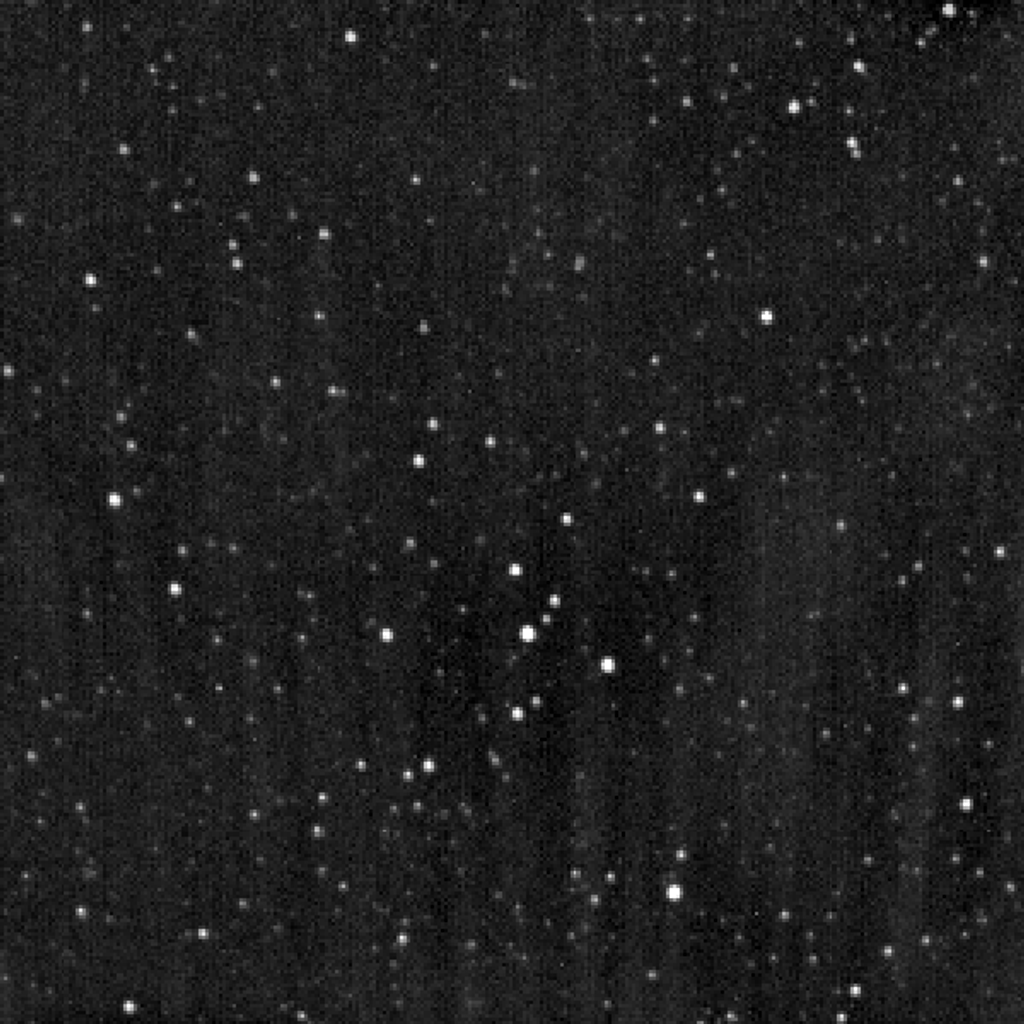1 min read
Orion Nebula

Extended Description and Image Alt Text
Extended Description
This square-shaped image looks like an abstract oil painting in vibrant shades of orange, purple, pink, gray-green and yellow against a black, star-speckled background. The dazzling colors are arranged in roughly two connected sections—a smaller, roughly crescent-like piece in the upper, left corner, and a larger, fan-shaped portion that extends from the bottom of the crescent to the bottom of the lower right quadrant of the square. Together, the two sections form a diagonally arranged pattern that is reminiscent of a festive, cap-sleeved, cinch-waisted, full-skirted dress from the 1950s.
In reality, this is the star-forming region called the Orion Nebula, and more than 3,000 stars of various sizes appear in this image. These stars are surrounded by a colorful cloudy materials forming structures that look similar to plateaus, mountain peaks, valleys, and pillars.
At the heart of this image, in its dazzlingly bright center, is the Trapezium, a group of four brilliant and massive stars arranged in a trapezoidal pattern. Ultraviolet light unleashed by these stars is carving a large cavity in the nebula and influencing the growth of hundreds of smaller stars.
Sprinkled throughout the picture are several dozen other particularly large, bright, young stars. Most are white, but one near the bottom of the lower, right quadrant is baby blue. Near the bottom of the image are many tiny, faint, red, star-like points. These are brown dwarfs, sometimes called "failed stars."
Image Alt Text
Orion Nebula
About the Object
- R.A. PositionR.A. PositionRight ascension – analogous to longitude – is one component of an object's position.05h 35m 17.29s
- Dec. PositionDec. PositionDeclination – analogous to latitude – is one component of an object's position.-5° 23' 27.99"
- Object NameObject NameA name or catalog number that astronomers use to identify an astronomical object.Orion Nebula
- Release DateDecember 16, 1992
- Science ReleaseNASA’s Hubble Space Telescope Discovers Protoplanetary Disks Around Newly Formed Stars
- CreditCredit: C.R. O'Dell (Rice University), and NASA
Related Images & Videos

Gas Plume Near the Edge of the Orion Nebula
A NASA Hubble Space Telescope "true color" mosaic image of a small portion of the Orion Nebula, taken the Wide Field and Planetary Camera (in wide field mode). Hubble shows a wealth of detail never seen before in the nebula. New features include: elongated objects oriented on...

Gas Plume From a Newborn Star in the Orion Nebula
A NASA Hubble Space Telescope picture of a hypersonic shock wave (lower right) of material moving at 148,000 miles per hour in the Orion Nebula, a star-forming region 1,500 light-years away. Studies of similar objects infer that such highly supersonic shock waves are formed by...

Close-up of Three Protoplanetary Disks in the Orion Nebula
A NASA Hubble Space Telescope picture of three protoplanetary disks, called "proplyds" in the Orion Nebula, a star-forming region 1,500 light-years away. Each proplyd appears as thick disk with a hole in the middle where the cool star is located. Radiation from nearby hot stars...
Share
Details
Claire Andreoli
NASA’s Goddard Space Flight Center
Greenbelt, Maryland
claire.andreoli@nasa.gov






























